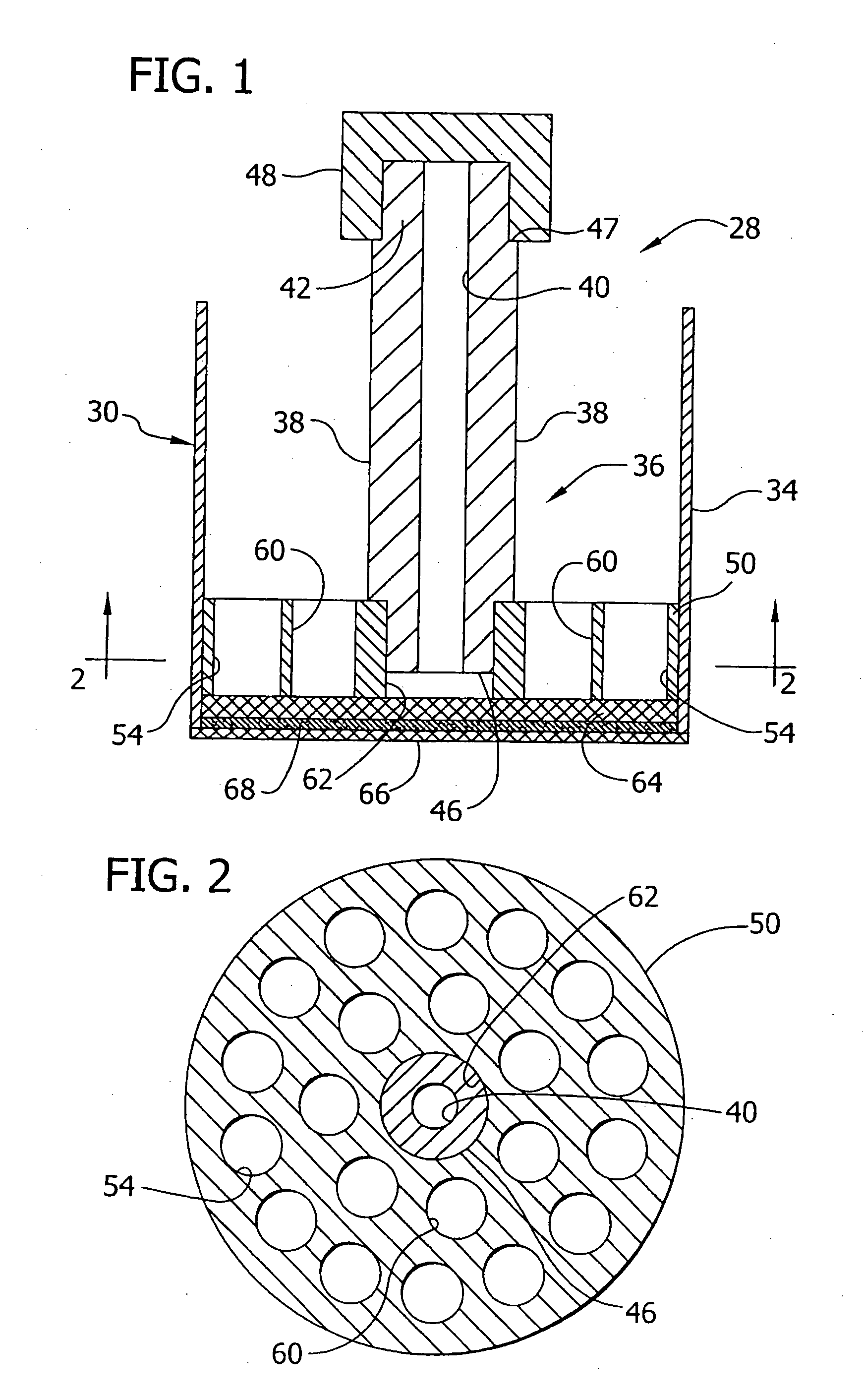Surface charge manipulation for improved fluid intake rates of absorbent composites
a composite and surface charge technology, applied in the field of surface charge manipulation for improving the fluid intake rate of absorbent composites, can solve the problems of insufficient overall composite fluid intake rate and leakage of absorbent composites during use, and achieve the effect of improving the fluid intake ra
- Summary
- Abstract
- Description
- Claims
- Application Information
AI Technical Summary
Benefits of technology
Problems solved by technology
Method used
Image
Examples
Embodiment Construction
[0028] The present invention provides increased void volumes beyond what can be achieved with conventional materials by interacting the materials in a way that results in increased void volume and faster fluid acquisition that is less complex and less expensive than present means known in the art.
[0029] Conventional superabsorbent technologies employ passive means for permeability enhancement. No motive forces are utilized in generating the desired flow channels and void volumes to achieve optimal fluid intake rates. However, the present invention focuses on leveraging the repulsive force of “like charges” on the surfaces of individual composite components brought about by particular surface treatments. The present invention makes use of interacting surface charge properties between the components of an absorbent composite when it is insulted with fluid. By selectively treating the surfaces of at least one of the components, such as fluff fiber or SAP, to achieve a desired repulsiv...
PUM
| Property | Measurement | Unit |
|---|---|---|
| size | aaaaa | aaaaa |
| size | aaaaa | aaaaa |
| contact angles | aaaaa | aaaaa |
Abstract
Description
Claims
Application Information
 Login to View More
Login to View More - R&D
- Intellectual Property
- Life Sciences
- Materials
- Tech Scout
- Unparalleled Data Quality
- Higher Quality Content
- 60% Fewer Hallucinations
Browse by: Latest US Patents, China's latest patents, Technical Efficacy Thesaurus, Application Domain, Technology Topic, Popular Technical Reports.
© 2025 PatSnap. All rights reserved.Legal|Privacy policy|Modern Slavery Act Transparency Statement|Sitemap|About US| Contact US: help@patsnap.com



